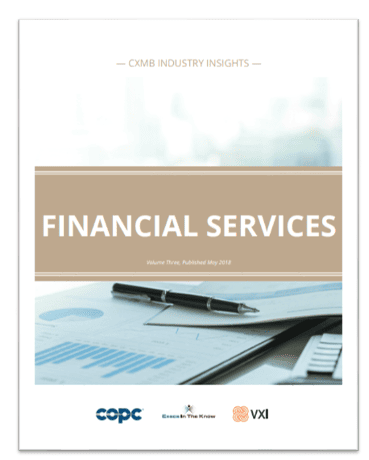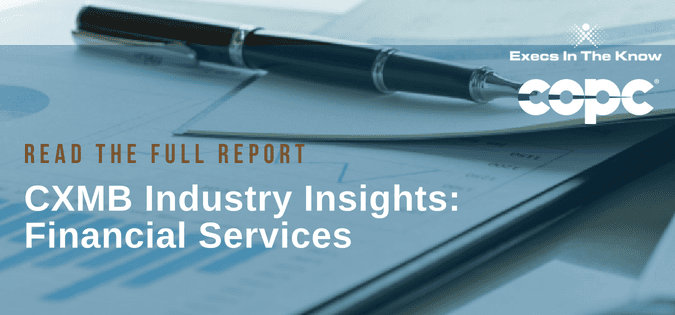
May 22, 2018
COPC Inc. and research partners Execs In The Know, in collaboration with volume sponsor VXI, are pleased to announce the publication of CXMB Industry Insights: Financial Services. This report is the third volume to be released in the CXMB Industry Insights series, coming on the heels of reports focused on travel and hospitality and the retail industry.
Like previous CXMB Industry Insights reports, this edition is consumer-focused, delving into the consumer experience and opinion as it relates to the financial services industry. The report covers a broad range of topics, from multi-channel service experiences to channel preferences and perceptions about service quality.
Along with the content outlined above, and for the first time in the series, CXMB Industry Insights: Financial Services also includes a section comparing results between U.S. and Canadian consumers. Topics for this special cross-border comparison section include experiences and opinions related to digital channels, customer privacy/security, and other topics.
Key findings from the full report:
Multichannel journeys are becoming commonplace, but not all multichannel journeys are alike. A primary distinction is whether or not a customer opted for the multichannel journey or was forced into it. When a customer is forced into a multichannel process, it’s often the case that the customer’s initial channel of choice was ill-equipped to service their issue. As shown in Figure 1, forcing customers into multichannel scenarios can have a powerful impact on how customers perceive the experience. When financial services customers are forced into a multichannel journey, they are far less likely to describe their experience in positive terms, while being far more likely to see the experience as “somewhat negative” or “very negative.”
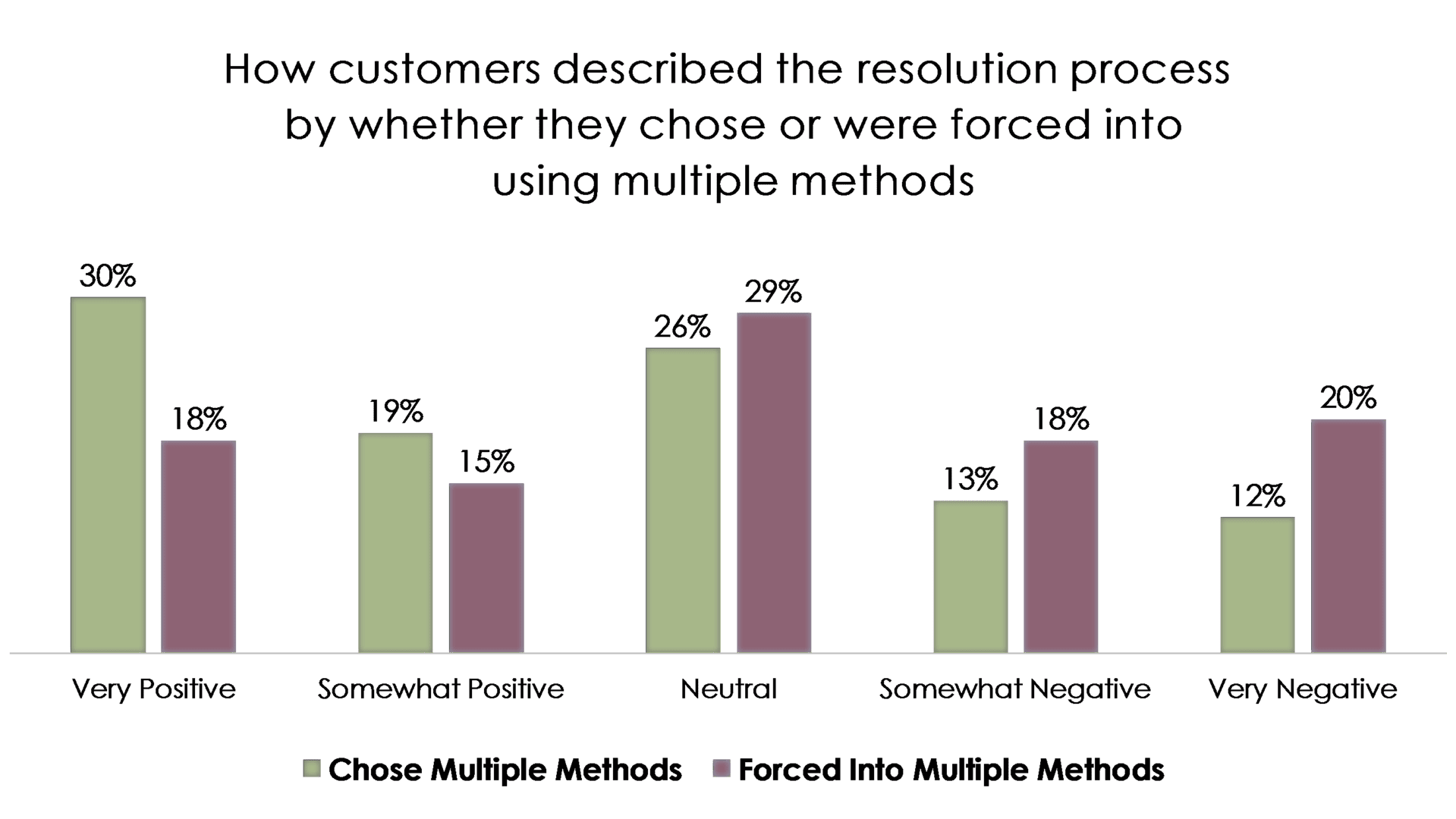
Figure 1.
Methodology: Conducted by Google Consumer Surveys, October 2017, and based on 124 online responses. Sample: National Adult Internet Population.
Figure 2 illustrates a key difference between U.S. and Canadian consumers. Canadians, on the whole, appear less concerned with privacy and data security issues compared to their American counterparts. A far greater percentage of Canadians (32%) indicate that privacy or security concerns have never negatively affected their willingness to use online, mobile or other digital banking services. This compares to just 18% of U.S. financial services customers. This leads one to consider if there is an actual issue with data security in the U.S. or if this is merely a matter of poor perception based on the all media attention paid to the breaches that do occur.
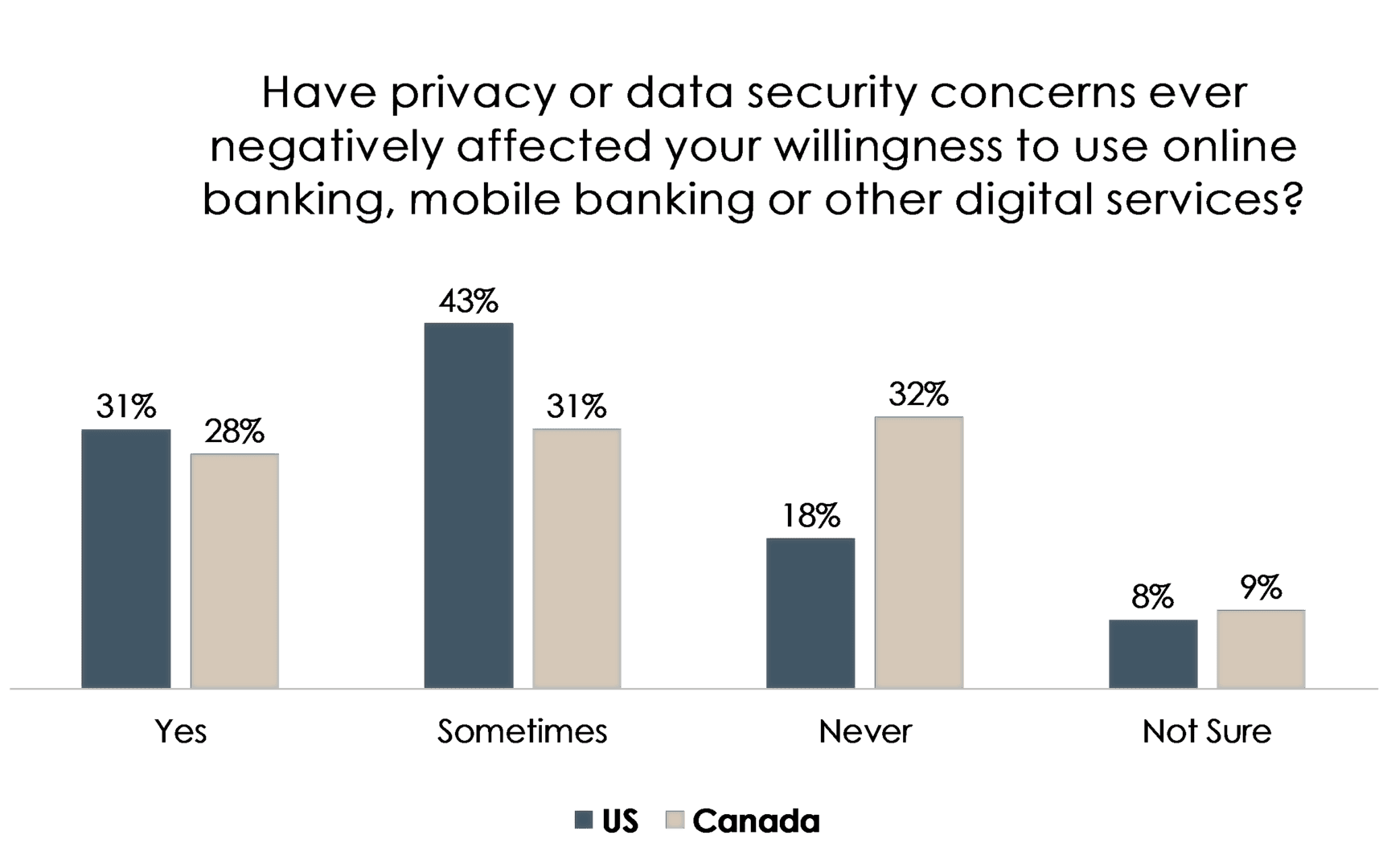
Figure 2.
Methodology: Conducted by Google Consumer Surveys, October 2017, and based on 208 (U.S.) and 205 (Canadian) online responses. Sample: National Adult Internet Population.
Choice is a crucial component of the customer experience. Many top brands provide a variety of channel choices, and consumers have come to expect this same level of variety from all the companies they do business with. When financial services customers were asked if they are able to easily resolve issues using their preferred contact method (Figure 3), nearly half of respondents (47%) indicated that they were able to do so only sometimes or not at all. In order to meet the heightened expectations of customers, financial services brands need to not only ensure they are providing the contact methods their customer want but also ensure those methods are easy to use and capable of resolving a wide range of issues.
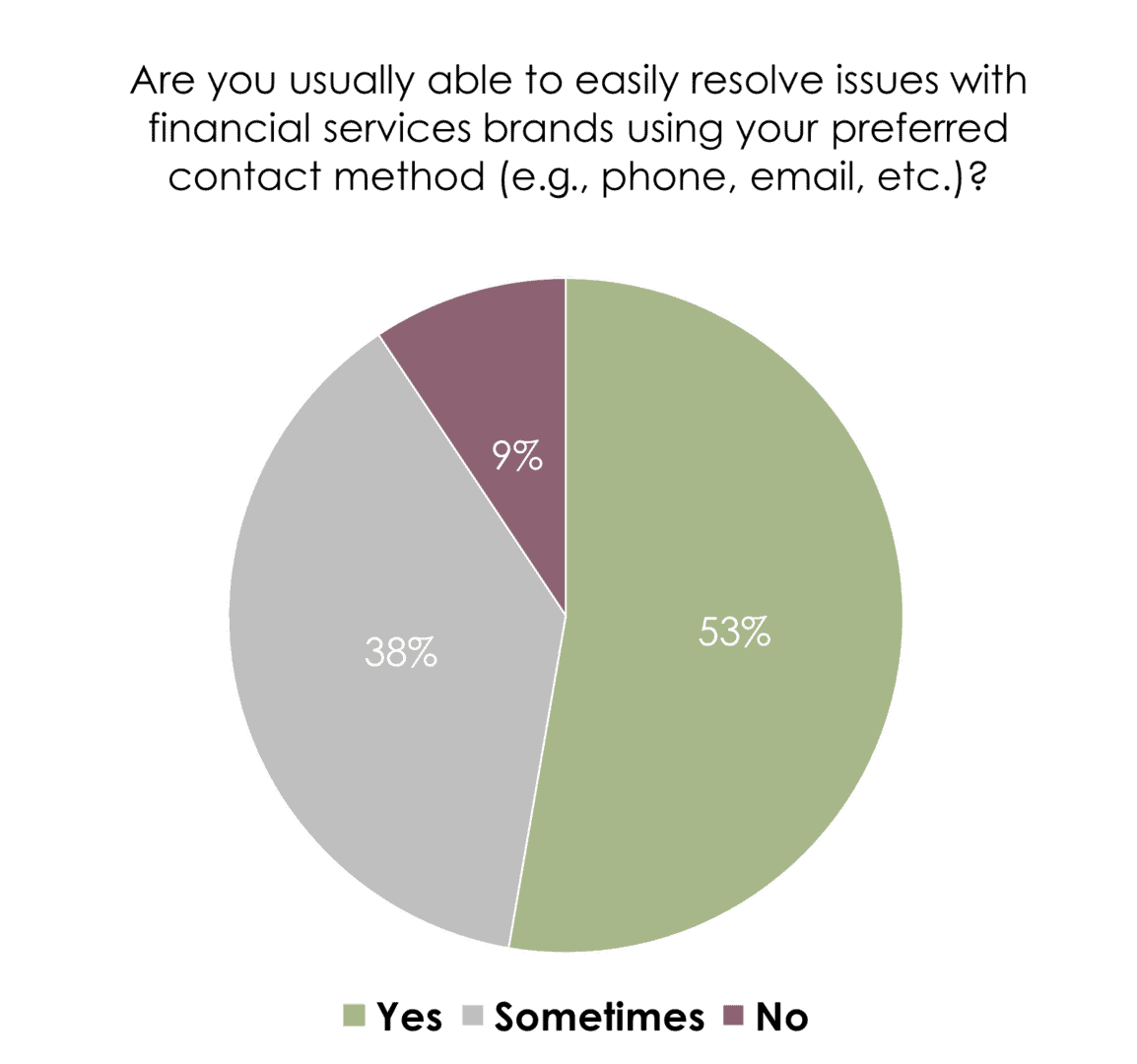
Figure 3.
Methodology: Conducted by Google Consumer Surveys, October 2017, and based on 203 online responses.
Sample: National Adult Internet Population.
These are just a few of the more than 30 individual survey results included in the full report. Download your own copy of this complimentary report here.
